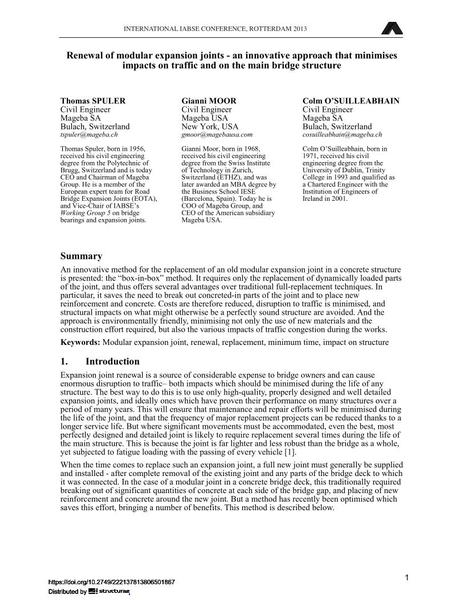Renewal of modular expansion joints - an innovative approach that minimises impacts on traffic and on the main bridge structure

|
|
|||||||||||
Bibliographic Details
| Author(s): |
Thomas Spuler
Gianni Moor Colm O'Suilleabhain |
||||
|---|---|---|---|---|---|
| Medium: | conference paper | ||||
| Language(s): | English | ||||
| Conference: | IABSE Conference: Assessment, Upgrading and Refurbishment of Infrastructures, Rotterdam, The Netherlands, 6-8 May 2013 | ||||
| Published in: | IABSE Conference, Rotterdam, May 2013 | ||||
|
|||||
| Page(s): | 400-401 | ||||
| Total no. of pages: | 8 | ||||
| Year: | 2013 | ||||
| DOI: | 10.2749/222137813806501867 | ||||
| Abstract: |
An innovative method for the replacement of an old modular expansion joint in a concrete structure is presented: the “box-in-box” method. It requires only the replacement of dynamically loaded parts of the joint, and thus offers several advantages over traditional full-replacement techniques. In particular, it saves the need to break out concreted-in parts of the joint and to place new reinforcement and concrete. Costs are therefore reduced, disruption to traffic is minimised, and structural impacts on what might otherwise be a perfectly sound structure are avoided. And the approach is environmentally friendly, minimising not only the use of new materials and the construction effort required, but also the various impacts of traffic congestion during the works. |
||||
| Keywords: |
renewal replacement modular expansion joint minimum time impact on structure
|
||||
